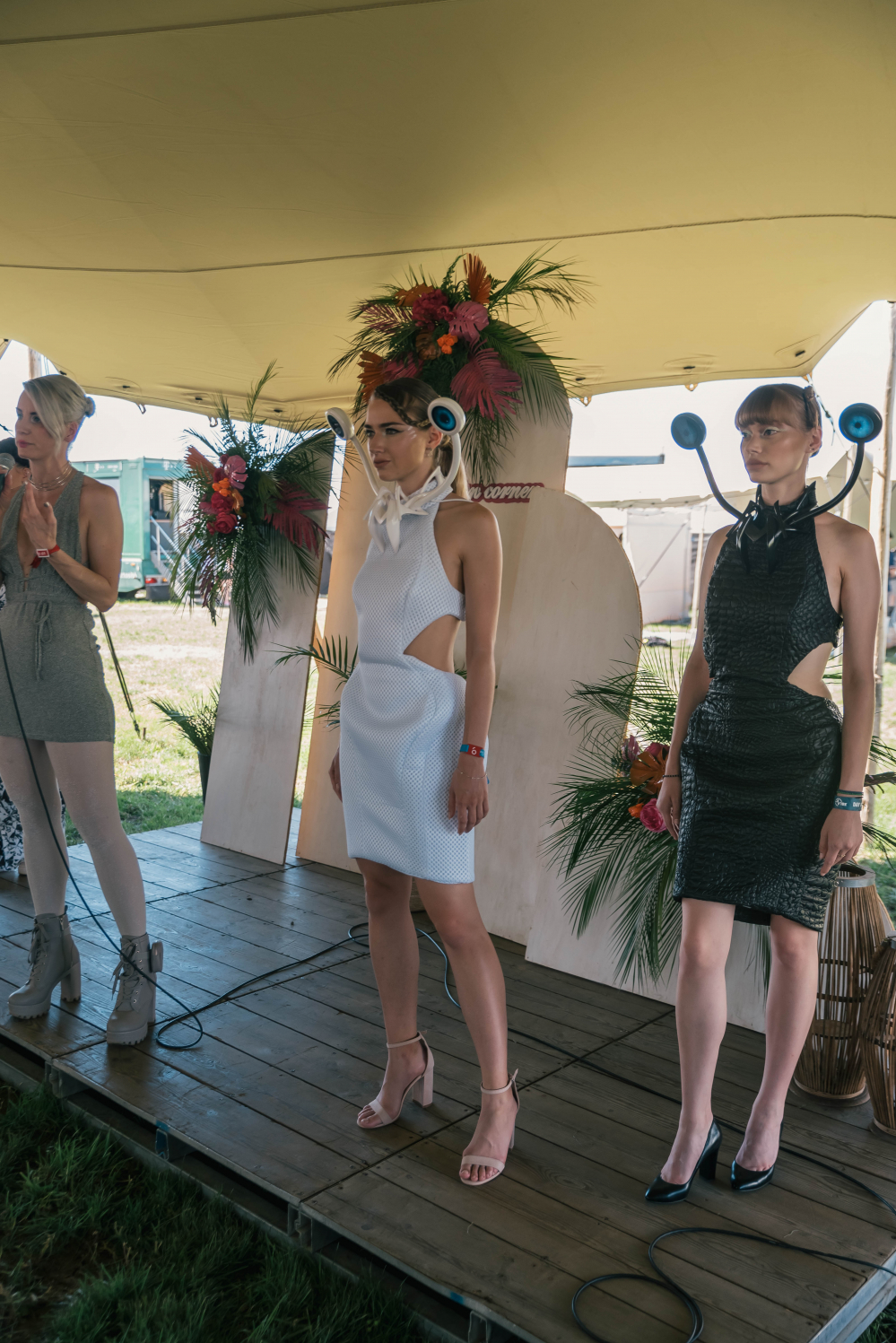Reading time: 3 minutes
Festival-goers took a fresh look at fashion during a presentation by Dutch fashion designer and innovator Anouk Wipprecht on 6 July at Vibe Koli. Mathias Corvinus Collegium (MCC) is a professional partner of the festival’s knowledge forum in Marosvásárhely/Târgu Mures from 4-7 July, with national and international guests, contributing with exciting topics to the rich schedule of the event.
Anouk Wipprecht takes a fresh approach to fashion, from an engineer's point of view, and is one of the creators of a new field called fashion tech. Her work is known worldwide and her talent has been recognised by organisations and companies such as NASA, Cirque du Soleil, Netflix, Audi, Volkswagen, Intel, Microsoft and Porsche. The young entrepreneur is taking fashion to a new level, using technology to make her creations come alive, move, breathe and even respond to their environment or the emotions of the wearer.
Her work is as much about programming, robotics, 3D modelling and printing as it is about simple sewing. She combines her unique creations, wearable clothes, with sensors, displays and interesting accessories to reflect emotions, react to stress, heartbeat or the environment. She sees fashion as an interface for expressing our culture, our personality and our emotions. One of her creations, for example, protects personal space, with spider legs protruding from the shoulder part of the dress towards people approaching. Some of her spectacular garments are connected to the Global Meteor Network, and devices mounted on the dresses use light to indicate the movement of meteorites.
As a teenager, she was already interested in both fashion and robotics, and observed the connection between her emotions and the clothes she wore. School didn't encourage her to combine fashion and electronics, but she didn't give up: she studied design by day and computer science in the evening. Now with over 20 years of experience, she is one of the creators of the fashion tech genre. Her work is not limited to fashion, she also makes prosthetics and artificial exoskeletons. Among her most spectacular creations are the artificial limbs she has created in collaboration with artist Viktoria Modesta, which include smoking, musical, luminous and reflective limbs. Viktoria does not want to hide the fact that she has lost her leg, but rather uses the situation to take her activity to a new level and get her message out to the world.
Anouk Wipprecht's work is threefold: creating her own creations, using science to convey her artistic message; programming and building technology tools for companies; and education, with the aim of getting more girls and young women into engineering. “I want to show how fun it is to work with electronics and that it's not as hard as it looks,” she said.
She admitted she never wanted to be part of the “evil” of the fashion world. She prefers to work with others and prefers collaborations, which she found in the tech industry. As fashion and clothing production are extremely harmful to the environment, she wants to make a useful and good change through her work. For example, in 3D printing, she works with a company that recycles plastic waste collected from the oceans. In the future, she wants to use fashion to express emotions and to make technology and inventions useful in this field. She said she would also like to work on shape memory alloys. Her work could help people with intellectual disabilities to express emotions, communicate or even help women feel more secure.
She draws inspiration from nature, animals, historical forms and science. One of her role models is Nikola Tesla and his ideas on open sourcing. She would like to see this kind of open sourcing in the prosthetic industry, for example, which is currently dominated by three large, entirely for-profit companies.






